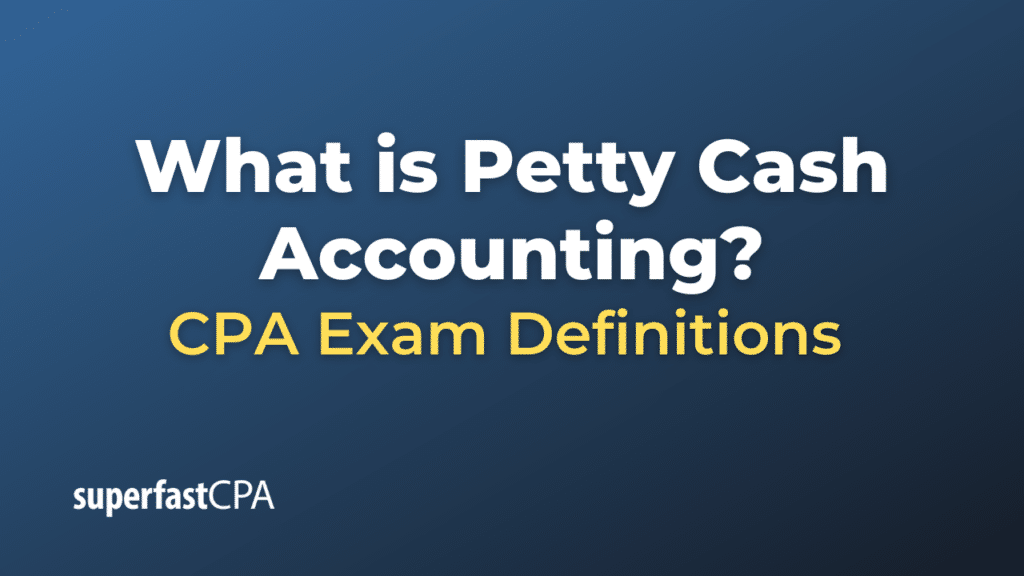Petty Cash Accounting
Petty cash accounting is the method by which businesses track and manage the small amount of cash kept on hand for minor expenses, also known as petty cash. It involves recording transactions, maintaining a log of all disbursements, and reconciling the petty cash account. Here are the general steps in petty cash accounting:
- Setting up the petty cash fund: The petty cash fund is established by writing a check for the amount the fund will hold. This is often recorded in a company’s general ledger as a debit to the petty cash account and a credit to the bank account.
- Tracking disbursements: Each time an amount is paid out from the petty cash fund, the transaction is recorded. This usually involves maintaining a log detailing the amount disbursed, the person who received the cash, the date, and the reason for the disbursement.
- Replenishing the fund: When the petty cash fund starts to run low, it is replenished by writing a check. The amount of the check should bring the petty cash fund back up to the original fund balance. The transaction of replenishing the fund is recorded in the general ledger. Each of the individual expenses paid out from the petty cash should be posted to their respective expense accounts.
- Reconciliation and audit: Periodically, the petty cash fund should be reconciled. This involves verifying that the remaining cash on hand plus the total of the disbursements equals the original balance of the fund. Discrepancies might indicate errors or irregularities. This step is crucial for transparency and for maintaining accurate financial records.
By following these steps, a company ensures that it properly records and manages the petty cash transactions, which contributes to accurate financial reporting and effective internal control over cash transactions.
Example of Petty Cash Accounting
Let’s take an example to understand how petty cash accounting works.
- Setting up the petty cash fund: The ABC Company decides to set up a petty cash fund of $200. They write a check for $200 and cash it. In the general ledger, they record a debit to the petty cash account and a credit to the bank account.
Journal Entry:
| Account | Debit | Credit |
|---|---|---|
| Petty Cash | $200 | – |
| Bank Account | – | $200 |
- Tracking disbursements: Throughout the month, various small expenses are paid out of the petty cash fund. These might include $30 for office supplies, $20 for postage, and $50 for an office lunch. Each of these disbursements is logged with details.
- Replenishing the fund: By the end of the month, $100 has been spent from the petty cash, leaving $100 in the fund. To replenish the fund back to $200, a check for $100 is written and cashed. The following entries would be made to record the replenishment:
Journal Entry:
| Account | Debit | Credit |
|---|---|---|
| Office Supplies Expense | $30 | – |
| Postage Expense | $20 | – |
| Meals and Entertainment Expense | $50 | – |
| Bank Account | – | $100 |
Notice that each expense is recorded in its respective expense account.
- Reconciliation and audit: The petty cash custodian adds up the receipts ($100) and adds this to the remaining cash ($100). The total ($200) should equal the starting petty cash fund amount, verifying that all the petty cash transactions have been accurately accounted for.
This is a simplified example, but it demonstrates the basic process of petty cash accounting and how these transactions might be recorded in a company’s books.









